Few things are more fun to simply look at than Victorian ball gowns. They are truly a feast for the eyes, made with rich colors, exquisite trimmings, artificial flowers, and yards of the finest fabrics. The women who wore them went to great effort to make sure that each detail was just right for each occasion a gown was worn. And just like with the rest of Victorian fashion, the requirements of these details changed quickly with each decade. Here are some of the main trends in ball gowns and evening wear from the Victorian and things to keep in mind if you are planning for a formal Victorian event.
Recollections has a large selection of ball gowns that are all the magnificence of the Victorian era with some modern touches. View our collection here or start with some of our favorites below.
Hoop skirt ball gowns – 1850s-1860s
The silhouette of ball gowns changed drastically from the beginning to the end of the 19th century. The Regency era saw long, straight lines with empire waists, something I will cover in another post. Long, straight skirts would then completely disappear until the 1910s, with enormous emphasis on various areas of the skirt rotating through the rest of the century. The first of these trends would be the large hoop skirts that are commonly associated with the Civil War era.
The basic style of the dresses was exposed shoulders surrounded by some sort of trim, a bustline as low as could be allowed, a tightly fitted bodice, and a wide hoop skirt shaped by a crinoline or multiple petticoats (depending on the year).
While we look at this style of gown today and interpret it as elaborate and even extreme, women were encouraged to err on the side of feminine simplicity, despite the size of the skirt. Beadle’s Dime Book of Practical Etiquette for Ladies and Gentlemen, published in 1859 reads:
“What has elsewhere been said in regard to dress and ornament will apply fully to the occasion of the dance. Let simplicity be the guide, and not display. The lady tricked out of many jewels and ribbons looks too much like a moving advertisement to command respect for it. If ladies generally knew how deep an impression a pure style of dress makes upon the other sex, and realized how trifling a gaudy dress seems to the person of true taste, we surmise their vanity alone would impel to simpler attire, rather than to elaborate and costly display.”
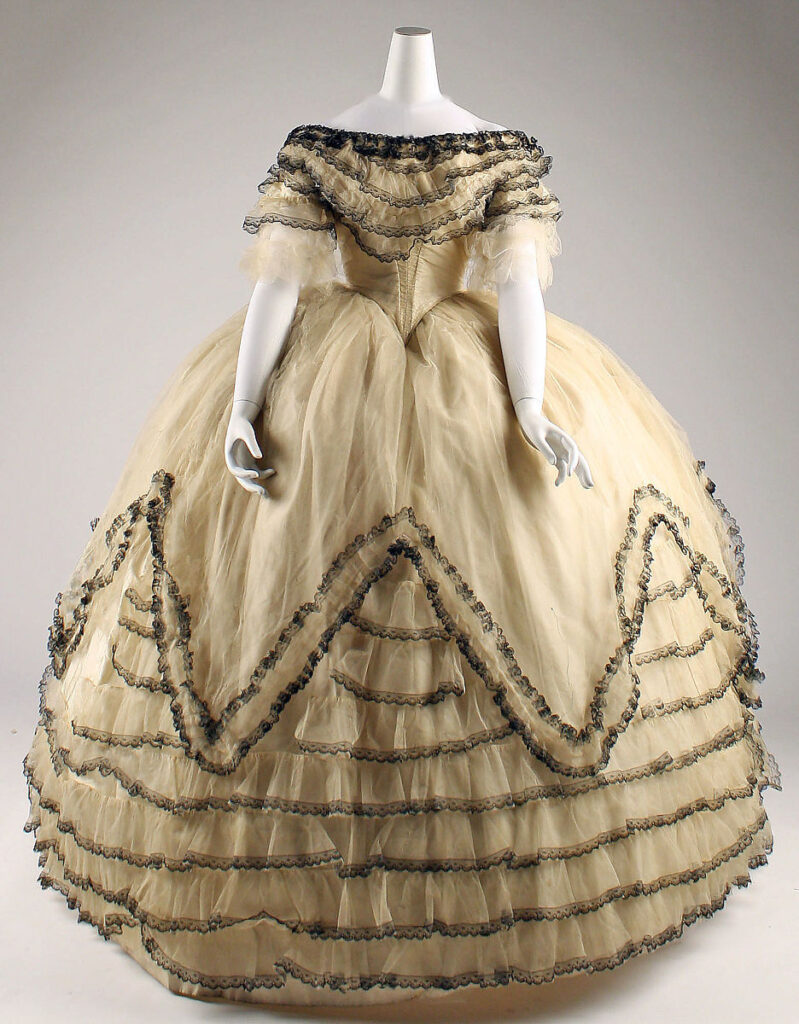
I LOVE this one!
Do you find these charming ball gowns to be led by simplicity?
Bustle ball gowns – 1870s-1880s
As the 1870s arrived more and more focus was placed on the back of gowns. This trend began with the flat front of the skirt, wide at the hips, and a soft poof in the back. This look was achieved without the help of bustle, though that would quickly change as the 1880s approached.
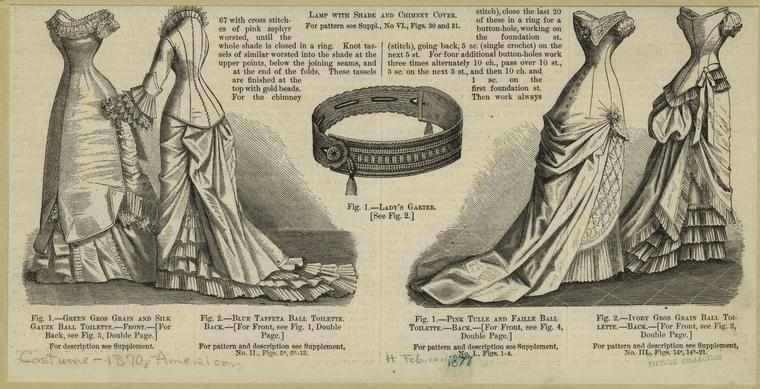
Being striking while still appearing wary of the spotlight when selecting a gown continued to be the advice for women. The Art of Dressing Well. A Complete Guide to Economy, Style and Propriety, published in 1870 advises:
“Yet, even in the full dress requisite for evening parties, the rule should be to dress well, becomingly, and appropriately, but not obtrusive, and above all, not gaudily, or too much. It is a crime against good taste to be too much in excess of the company, yet care must be bestowed upon the costume, the hostess expects it, and the guests observe its neglect. It is the test of good taste to be in the foremost rank of guests for appropriate dress, but never in advance of others.
The lightest fabrics, brightest tints, and most elaborate trimmings are all not only allowable, but absolutely looked for, in the ball-dress. All here should be light and fanciful. Sad, somber colors are as much out of place in a ball-room, as sad, gloomy faces would be; but discord in colors is also much to be avoided as frowns on the countenance.” [sic]
The slight bump in the back would quickly turn into an extravagant bump that could only be achieved with the help of sturdy bustles worn underneath the gown. The trend then was for elaborate embellishments in the back of the dress, but still with bare shoulders. That being said, the bust was often not quite as exposed as seen in earlier times.
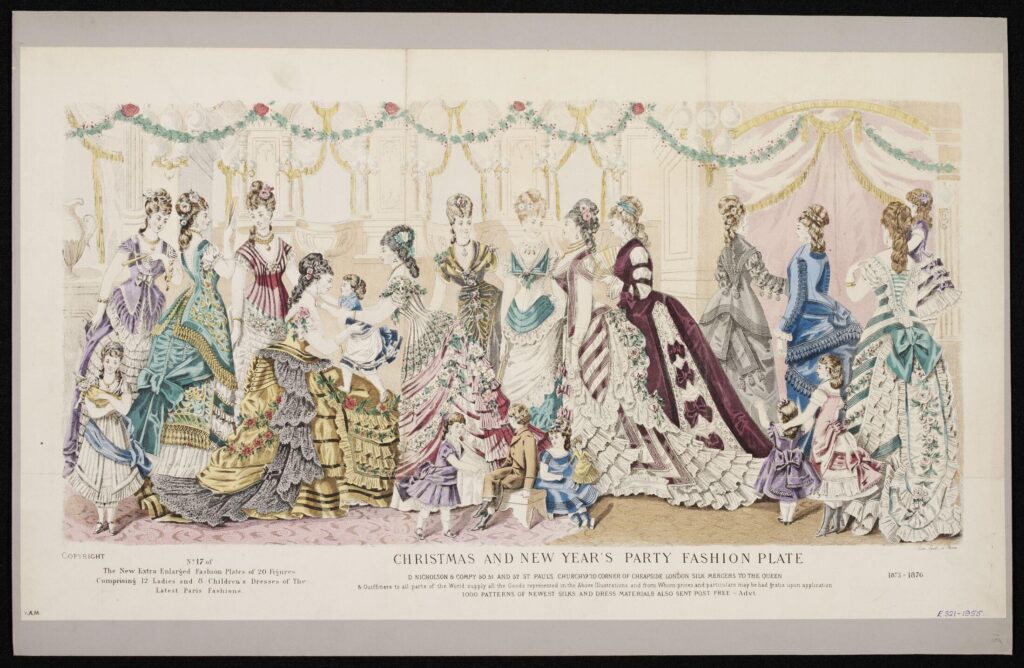
Learn more about bustles: The rise and fall of the bustle: a short history
Besides getting the silhouette correct, attention to the materials used to create women’s clothing was of great concern during the later part of the 19th century. Women were encouraged to select the finest quality fabrics and to enjoy creating a look that would be a true experience for those who gazed upon them. In 1879 Madame Demorest said of creating a ball gown:
“For evening dresses, there is some of the most exquisite hand-work on mousseline de soie or silk gaze that the most fastidious could possibly desire–carnations of every hue, that look as if the natural flower were laid on the muslin, and pressed there, form one design; French pinks, feathery as snowflakes, form another pattern; and Oriental palms droop their gracefully crowned heads, in finest floss on yards of softest gaze, whose perfect beauty is seen only by the brilliant light of a ball-room. Tropical foliage is so truly represented in its luxuriant redundancy, that one almost feels the balmy breezes of the sunny clime, while gazing on these marvels of artistic embroidery.”
Bell-shaped ball gowns 1890s-1900
After the bustle fell out of style skirt styles would become much more subdued. The skirt quickly took on a bell shape, leading eventually to the S-silhouette. The look featured a lower extended bodice than had previously been seen. This was followed by a skirt that while generous at the hips, was fairly narrow. The bustle was replaced by the train, which was where the embellishment was focused. The shoulders would remain exposed, although the least amount of skin was accepted during this time period compared to the others we have explored.
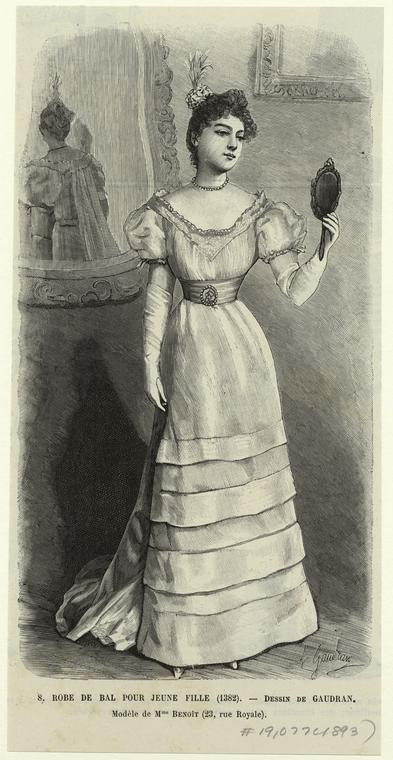
Which style of gown would you most prefer for your next Victorian ball?
Learn more about Victorian fashions:
Elegance at Home: Victorian Wrappers
Victorian opera attire: a feast for the eyes

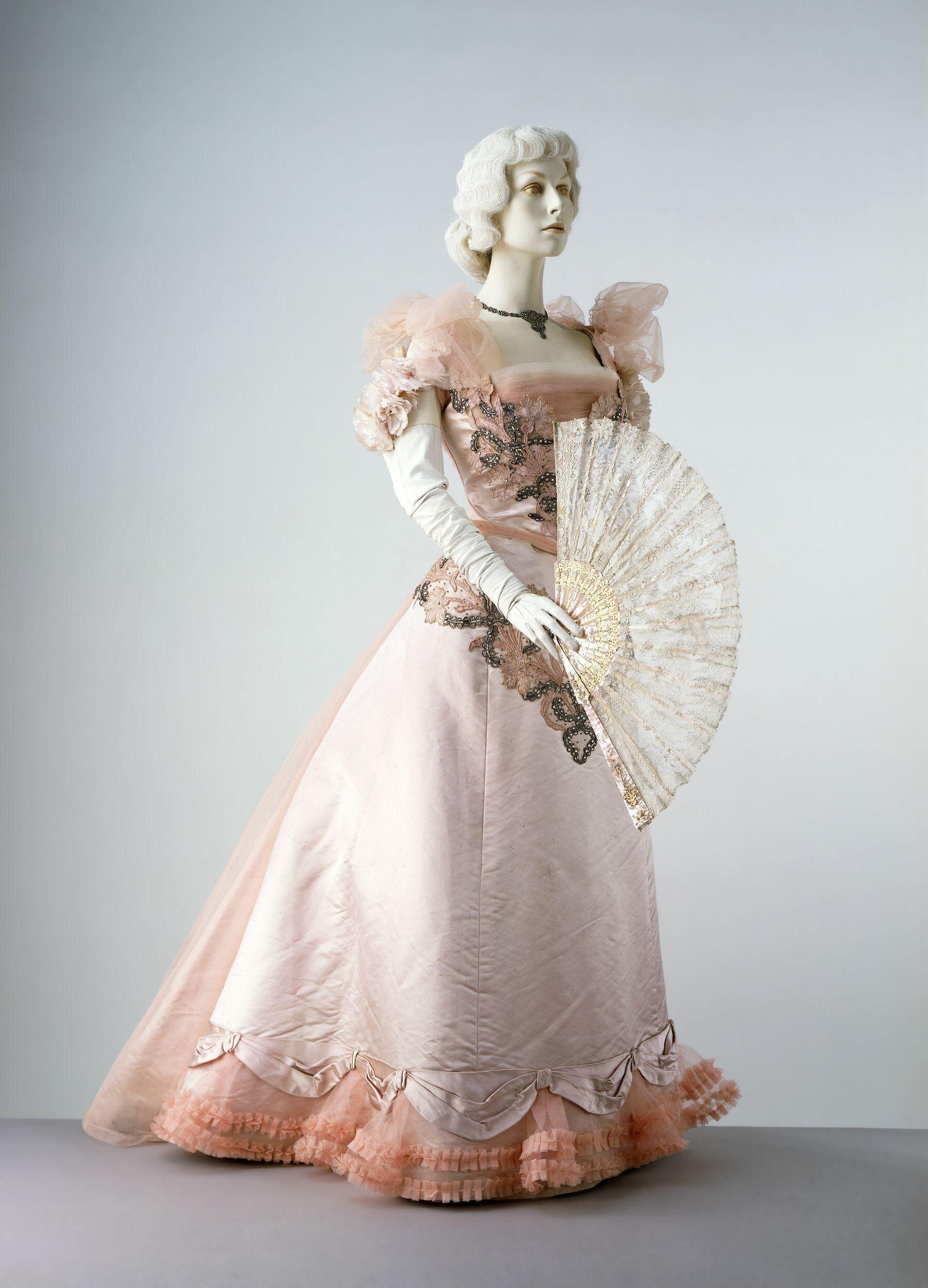
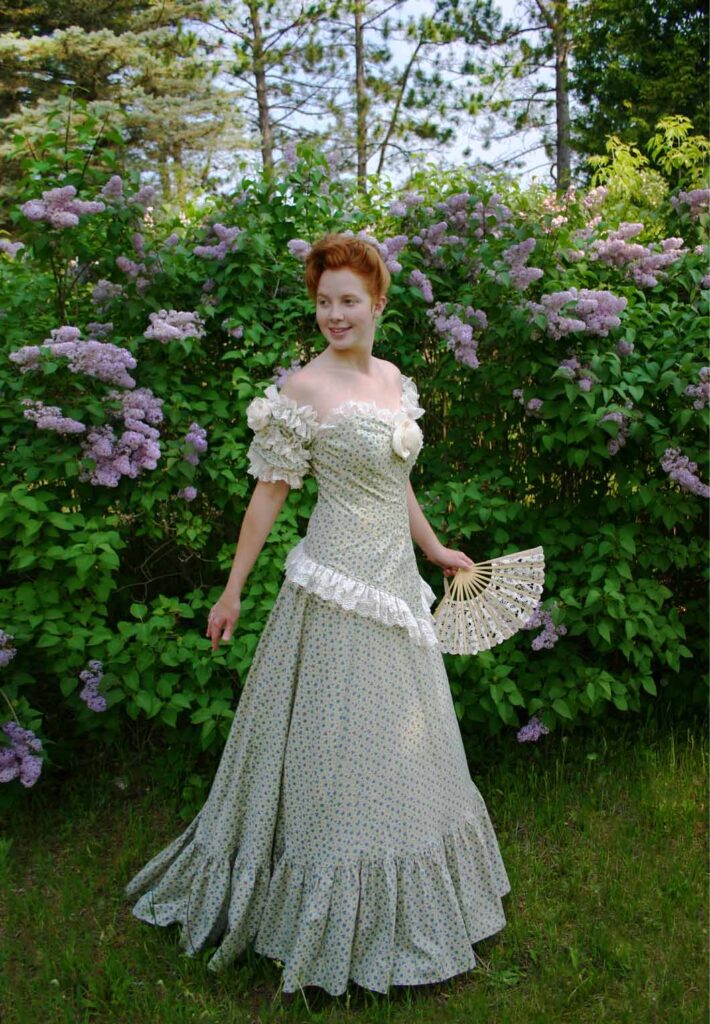
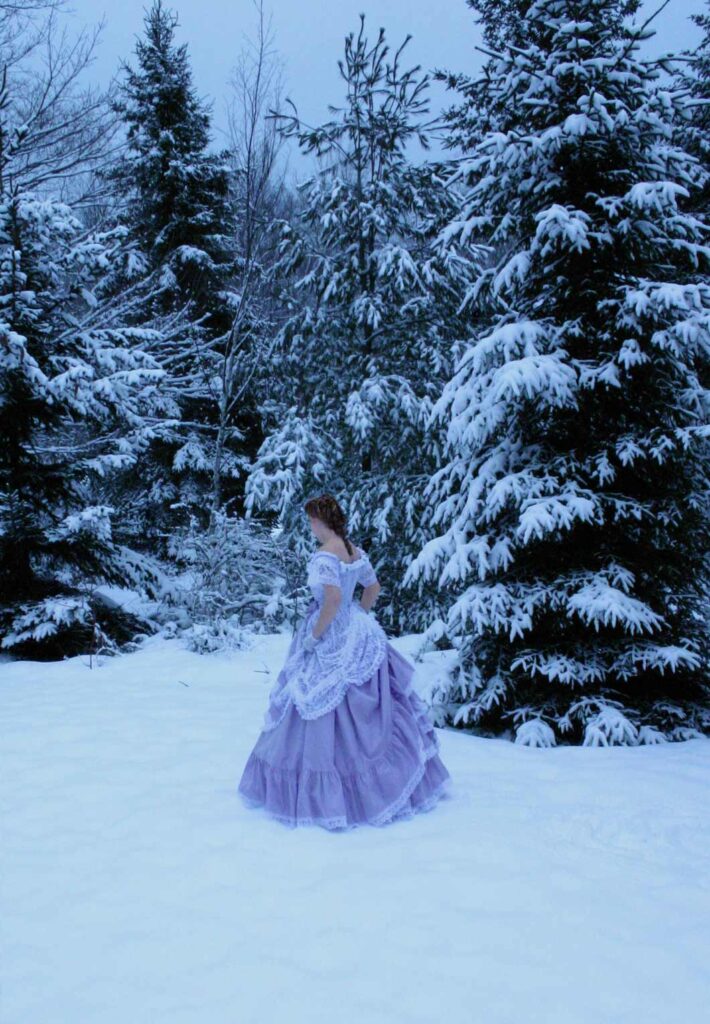
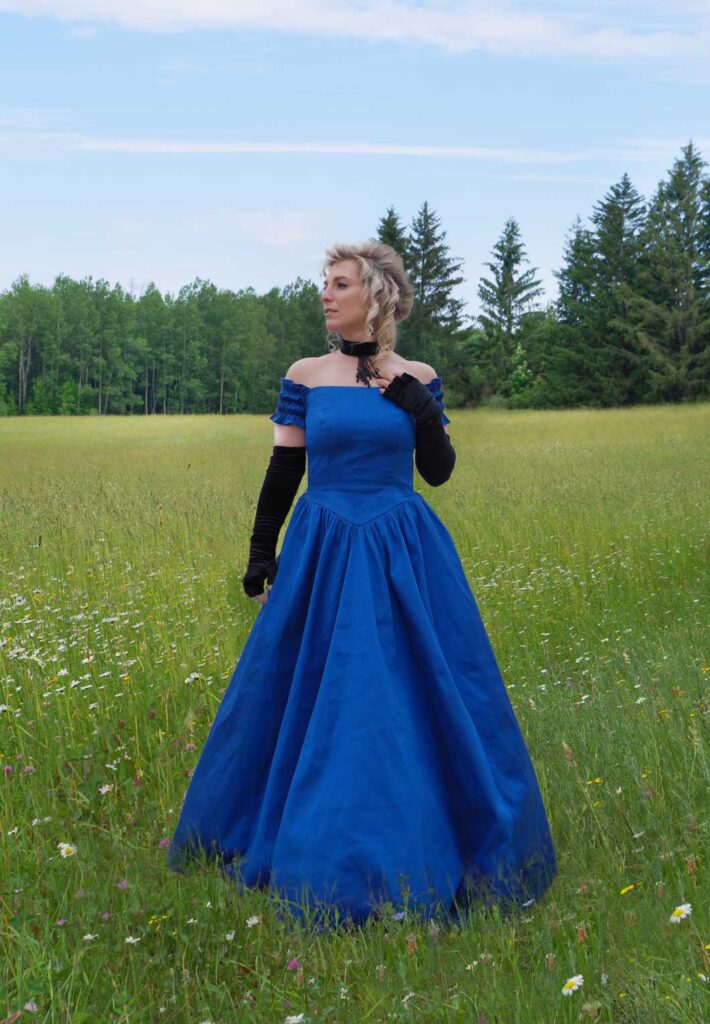
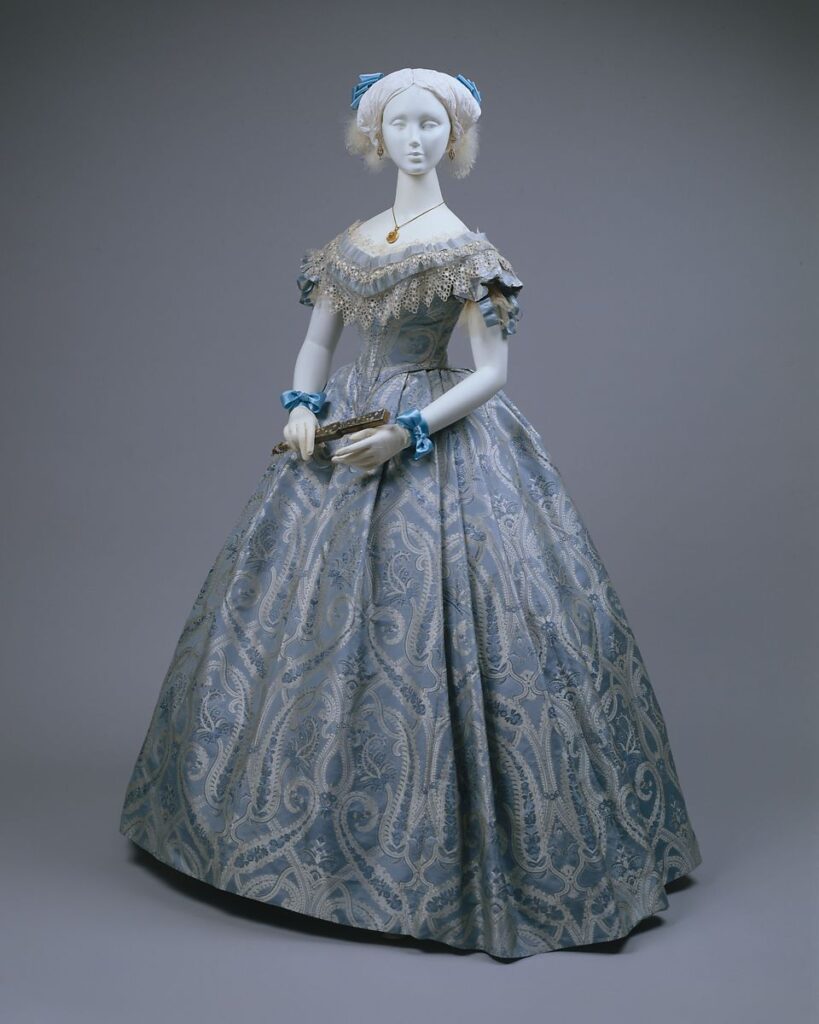
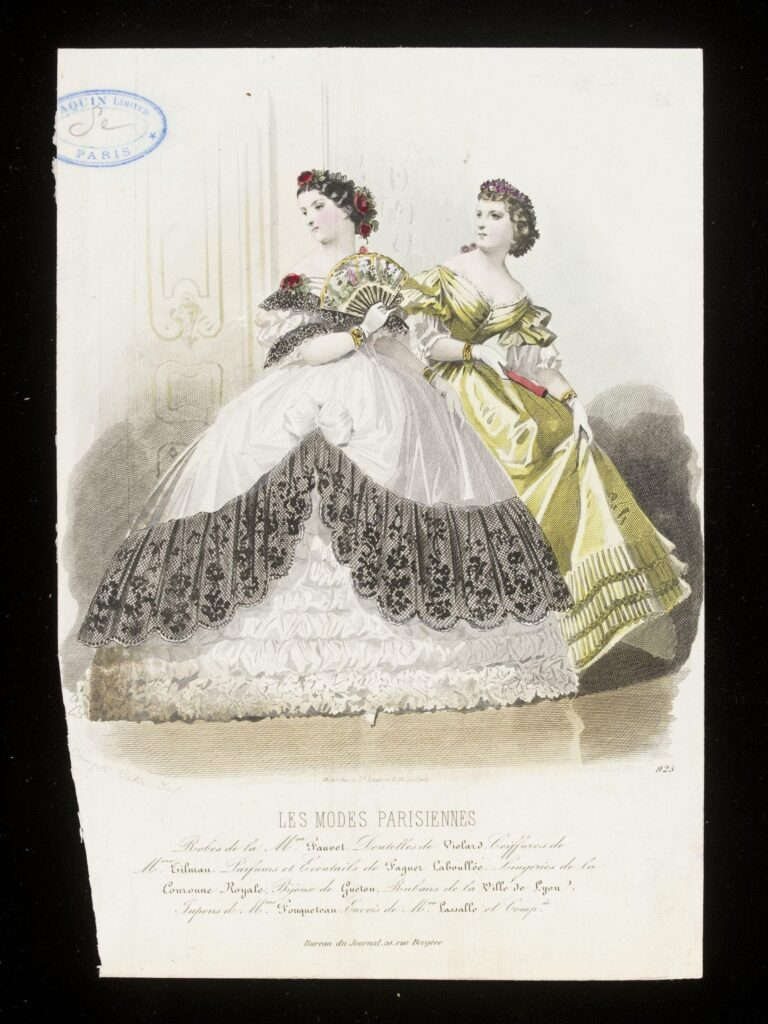
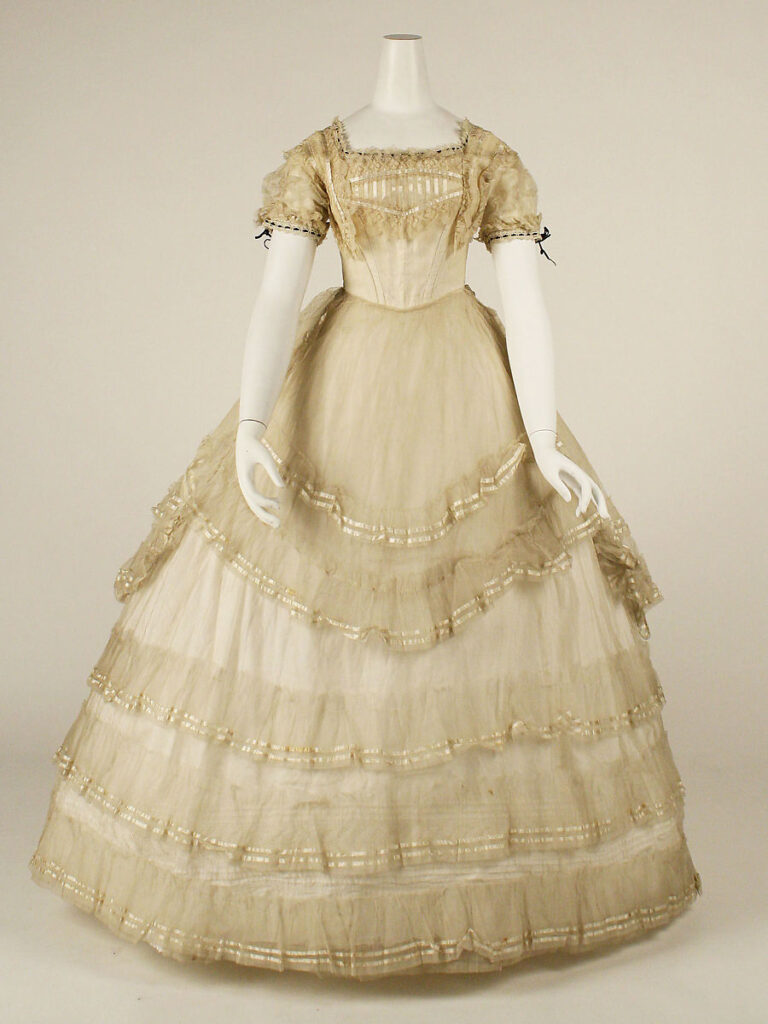
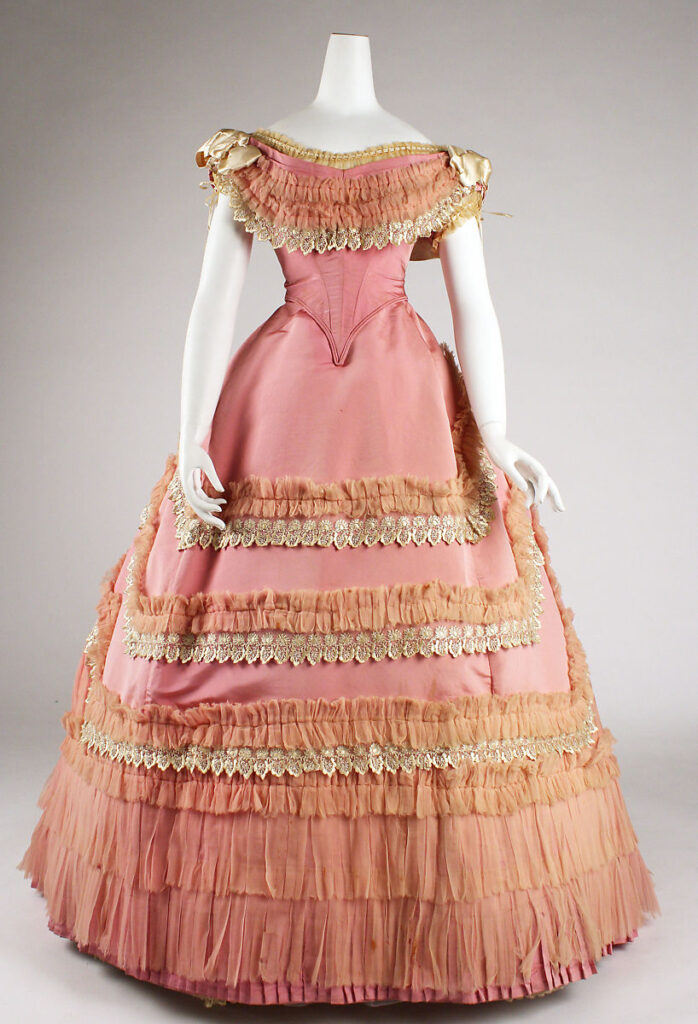
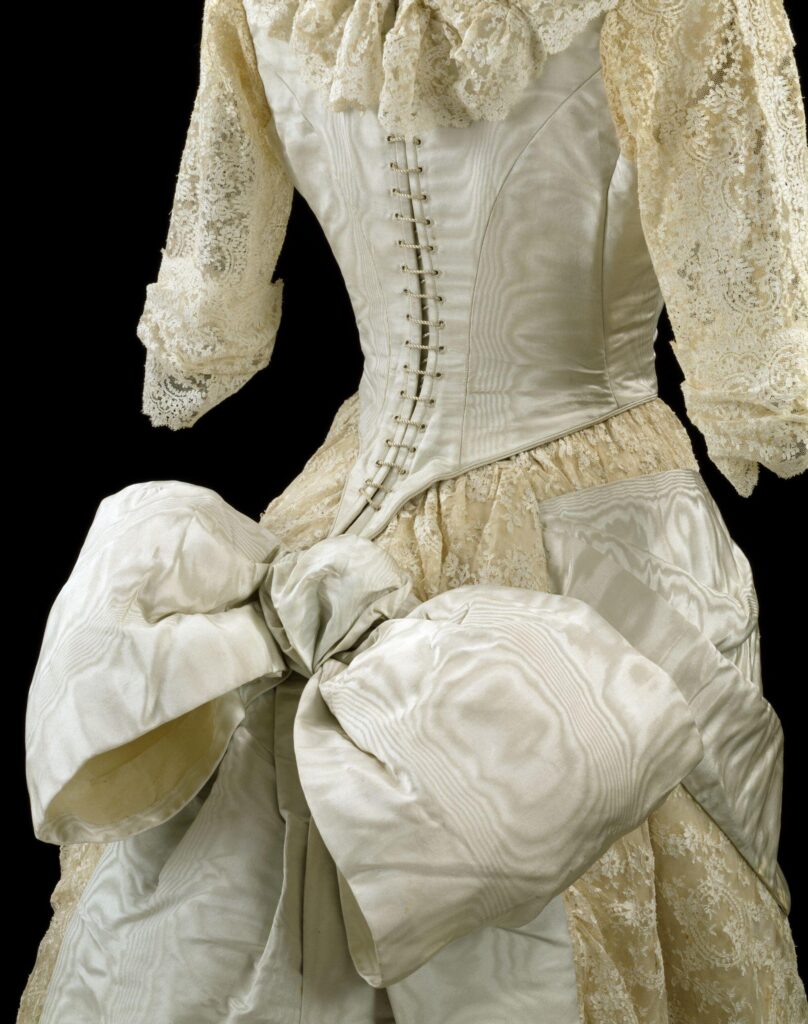

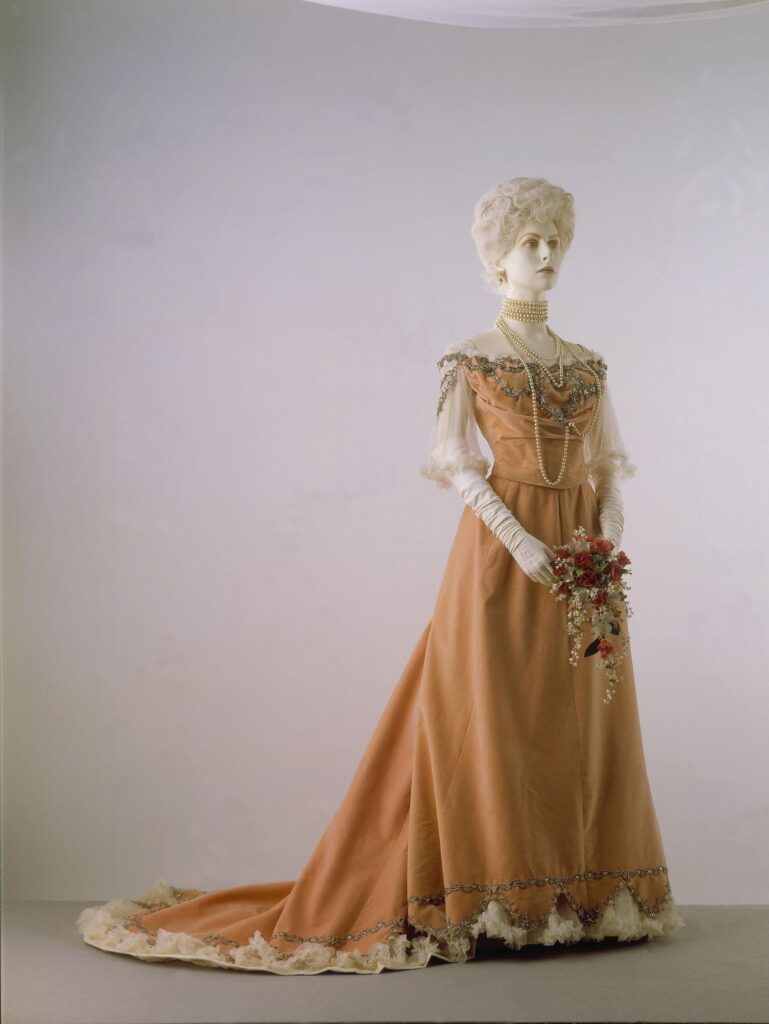

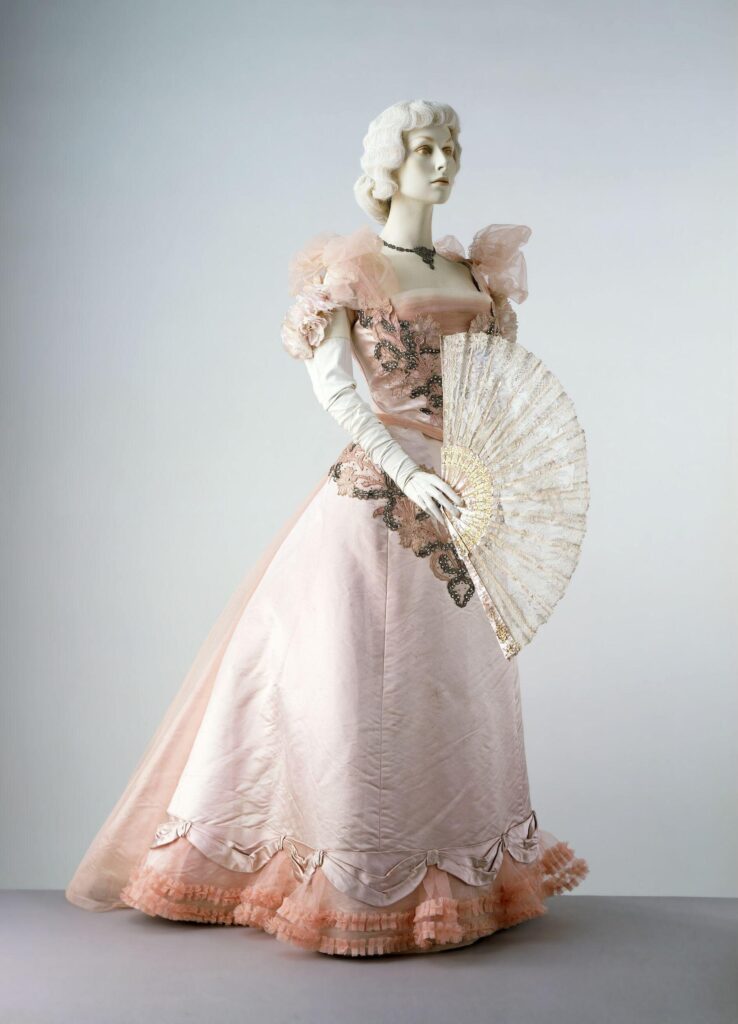












Leave A Comment